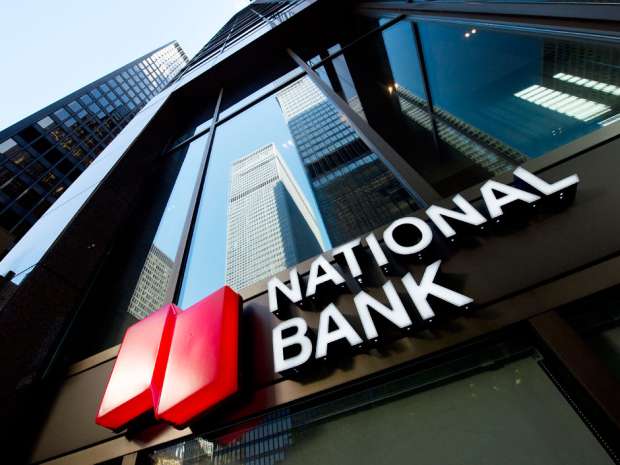Uncertainty clouds view of global markets
by Kristina Hooper, Global Market Strategist, Invesco Ltd., Invesco Canada
For the past several months, I’ve talked about disruption as a key theme for 2017 and argued that it would have three key sources this year, including geopolitics and monetary policy. Last week was emblematic of that theme, as geopolitical events and central bank decisions shared the spotlight.
Geopolitical concerns in North Korea and the U.K. generate uncertainty
Last week started with geopolitics at centre stage: North Korea had announced over the previous weekend that it is now able to fit a hydrogen bomb on an intercontinental ballistic missile – a frightening development for the free world. It is evidently racing to develop nuclear weapons, moving more quickly than expected. It is not clear how this situation can be successfully resolved.
We also saw a very public debate about Brexit unfold in British Parliament last week. Prime Minister Theresa May must deliver a speech detailing her negotiating positions later in September, ahead of the European Union (EU) summit in October. We are entering a critical point in Brexit negotiations and, as the clock ticks, it seems there is less consensus within the U.K. today than there was six months ago on what Brexit should look like. It is concerning to hear EU Brexit negotiator Michel Barnier say that these negotiations are an opportunity “to teach the British people and others what leaving the EU means.” I would expect him to view the negotiations over the “divorce bill” as his first “teachable moment,” given the vastly different views held by the EU and the U.K. on the tab.
Central bank surprises in Canada, the U.S. and Europe
Then monetary policy wrested the spotlight. Rumours emerged early in the week that Gary Cohn’s chances to be named as the next U.S. Federal Reserve (Fed) chair have diminished, the result of his rebuke of President Donald Trump in the wake of Charlottesville. The Trump administration reportedly has a long list of possible candidates, including a number of businesspeople, which injects uncertainty into what the future Fed will look like.
Adding to that uncertainty, Fed Vice Chair Stanley Fischer submitted his resignation, effective in October. His term was set to expire next June anyway, but his decision to make an early exit was unexpected and comes at a time when the Fed is set to begin what is arguably one of its most important but risky undertakings – balance sheet normalization. We can’t forget that we are in experimental territory, and Fed Chair Janet Yellen’s emphasis has been on a very slow, deliberate and thoughtful unwinding process. I believe Mr. Fischer’s resignation increases the likelihood that the Fed will announce the start of normalization at its September meeting. However, I think this resignation also increases the odds – albeit still low – that newcomers to the Fed may challenge the plan for balance sheet normalization or take a more hawkish stance on rate hikes.
Monetary policy continued to command the spotlight with the Bank of Canada’s (BoC) surprise decision to raise rates. This was the BoC’s second consecutive rate hike after nearly seven years of maintaining ultralow rates. While recent economic data has been largely positive in Canada, I believe the BoC may be hitting the brakes too fast. While the Canadian economy is experiencing solid growth, it is facing several headwinds, including higher taxes and lower housing demand in key regions.
The European Central Bank (ECB) also met last week, and it surprised many by declining to address the future of its asset purchase program until later. ECB President Mario Draghi said the ECB would most likely decide about tapering at its October meeting but that this would be a “calibration” for next year. He even left the door open for further stimulus despite improving economic growth. He also said, as expected, that the ECB is closely following the strength of the euro.
The U.S. sees a surprise deal to raise the debt ceiling
Later in the week, attention turned back to geopolitics, with a surprise political development in the U.S. President Trump made an unexpected deal with Democratic leadership to push up the debt ceiling and fund the government for the next three months. The market seemed to view this pessimistically, at least initially. I can understand this negative reaction, given that it injects significant uncertainty into federal policymaking. Legislators are likely suffering from whiplash and confusion, as they have watched the Trump administration pivot from hard right positions on issues such as immigration to a strong embrace of Democrats with this agreement – all in the course of several months. However, that is the nature of populism, which is why it often injects great uncertainty into the legislative process.
While it is too early to have more certitude, I think this deal should be viewed as a positive, as it indicates the president’s willingness to compromise and suggests he could accomplish other legislative successes, particularly tax reform and infrastructure. Those are both bipartisan issues that have the potential to have the greatest positive impact on the economy. It seems the Democratic members of Congress – who appear less focused on ideology right now and more interested in racking up legislative accomplishments in advance of the 2018 midterm elections – would be willing to work with moderate Republicans on those bills. And the raising of the debt ceiling does allow time for Congress to address tax reform.
However, there is certainly downside risk: Unfortunately, this agreement pushes off these issues for only three months; it does not resolve them. If Congress is going to address tax reform, it will have to do it quickly, as December is just around the corner. Additionally, if President Trump is striking deals with the Democrats, that potentially opens the door for further surprises that contradict his policy agenda (such as a change in fiscal priorities or higher taxes for upper-income individuals) – and such surprises could rattle markets. It may also leave the president with fewer allies in his own party who would be willing to support him in the event of a crisis, such as an impeachment vote.
Looking ahead
Disruption is likely to intensify. Chinese President Xi Jinping, in an address at a recent economic summit, posited that downward risks for the global economy are actually increasing despite the somewhat synchronized global recovery; he also warned again about the dangers of protectionism. And indeed it seems that downward risks driven by geopolitical disruption and monetary policy disruption are rising.
All the disruption in the past week has had an impact on capital markets, with some of the greatest effects on currency markets and bond markets. Geopolitical concerns caused yields on “safe haven” government bonds to fall, with the 10-year U.S. Treasury yield also pushed down by worries over the impact of Hurricane Irma. And currencies continue to be affected by policy developments and expectations about monetary policy – and vice versa. The U.S. dollar has continued to weaken on diminishing expectations that the Fed will raise rates again this year. The People’s Bank of China’s recent announcement that it will relax currency controls has already sent the renminbi down significantly. And then there is the euro: Markets seem to believe the strong euro is a reason why the ECB has not yet announced the tapering of quantitative easing. My concern is that disruptive forces will ultimately affect stocks in a more powerful way.
Given this environment, I repeat my view that investors need to be thinking more and more about ways to help protect their portfolios from the risk of market volatility. One way to do that is through diversification, and I believe alternative investments can potentially play a role.
Subscribe to the Invesco Canada blog and get Kristina Hooper’s market reviews in your inbox.
This post was originally published at Invesco Canada Blog
Copyright © Invesco Canada Blog














